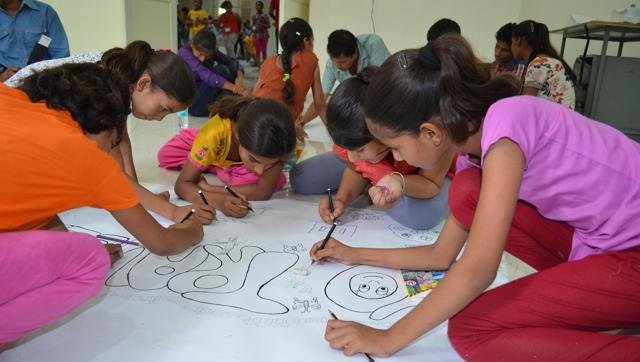
What we learn in the early years remains with us for the rest of our lives. Several studies demonstrate that high-quality preschool learning makes a child school-ready, with greater chances of academic success, faster adjustment to school, and reduced behavioral problems.
However, government funding for programs across the world, aimed at early childhood remains wholly inadequate. There is a substantial gap for high-quality, developmentally appropriate early childhood care and education (ECCE) programs that provide short and long-term benefits for children’s cognitive and social development. Many global studies show that spending on early childhood interventions produces significant economic gains. Three of the most rigorous long-term studies conducted by Harvard University found a range of returns between $4 and $9 for every dollar invested in early learning programs for low-income children. High-quality early childhood interventions like Sesame Street have the potential to positively impact children’s school performance. Programs such as Galli Galli Sim Sim (the Indian adaptation of Sesame Street) reach more than 100 million kids on TV in Hindi, Gujarati and Marathi languages and through various outreach programs, encouraging them to learn not just alphabet and numbers, but also imparting important 21st century skills such as conflict resolution, critical thinking and problem solving strategies and language. Such findings raise the exciting potential of electronic and emerging media to impact children’s school readiness. As per the Census 2011, there are 164.48 million children in India between 0-6 years of age. Recognizing the need to provide quality pre-primary programs, a number of constitutional and policy provisions were made by the government such as the 86th Constitutional Amendment which introduced Article 21A on the Right to Free and Compulsory Education (RTE) for 6-14 year-old children, guaranteeing children the right to quality elementary education. The Ministry of Women and Child Development (MWCD) is the nodal department for ECCE, responsible for the Integrated Child Development Services (ICDS) program on the ground, covering around 38 million children through a network of almost 1.4 million anganwadi centers. However, the anganwadi “workers” as they are called, function under several constraints — they are poorly paid, have extremely limited resources to run a centre and are not skilled or equipped to be preschool educators. In addition, there are still substantial numbers of children not enrolled in preschools, or those who show poor learning skills in early grades. Unlike the K-12 system covering the primary, secondary and senior school education, ECCE is not regulated or standardized. There is a considerable discrepancy in the way ECCE providers deal with admission criteria, curricula, education quality, and teachers’ qualifications. Learning abilities of young children are assessed unfairly and parents see ECCE more as a ticket out of poverty, presenting new opportunities they themselves could not access during their school years. An active public-private partnership must be initiated to reformulate policies for providing universal access to high-quality, educational content for young learners. The power of emerging media and advanced communication can be used effectively to help children, especially those from disadvantaged backgrounds, reach their highest potential. Early childhood development is an imperative to meet the Sustainable Development Goals of eradicating poverty, reducing child mortality, and achieving universal primary education, combating diseases. We as a nation must invest in improving the quality of our children’s early education, so that kids can grow up smarter, stronger and kinder.
Sashwati Banerjee is managing director, Sesame Workshop in India. The views expressed are personal.



